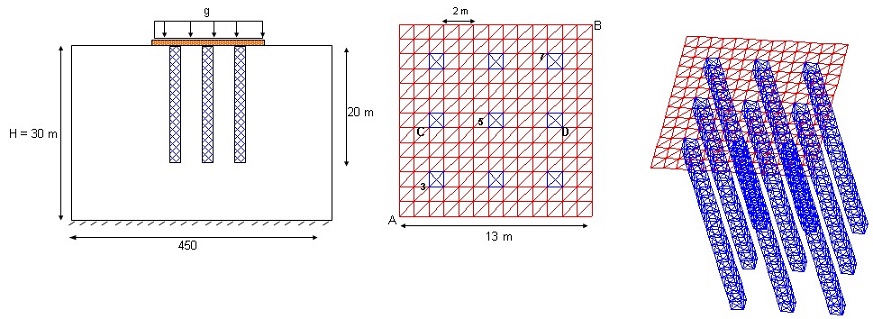SOIL-STRUCTURE INTERACTION (SSI)
Introduction
The mechanical performance of a construction
is governed by the interaction of the superstructure, the substructure,
and the soil mass within a mechanism denominated of soil-structure
interaction (SSI). In the engineering practice, the interaction
mechanism is usually ignored. As a consequence, structure and foundation
projects are still developed independently from each other. In general,
when dealing with the building structure, the engineer considers
undeformable supports to determine the response of the building and of
the foundation. This set of reactions is given to the engineer in charge
of defining the foundation, calculating settlements, and comparing
these settlements with admissible values.
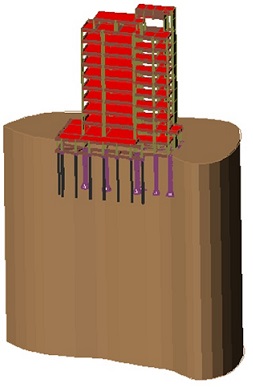
Introduction - Part 2
However, the effort distribution in the
superstructure is not usually re-evaluated. As a consequence of the soil
deformation, the stress flow in the superstructure is different from
that originally calculated when considering the hypothesis of
undeformable soil. It is expected that the change of efforts in the
structure be either absorbed by the safety coefficient or small enough
to cause no significant disturbance in the effort distribution of the
building-foundation-soil system. These possibilities not always occur
and the consequences can be highly undesirable.
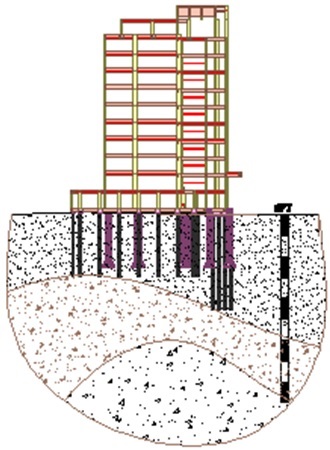
Introduction - Part 3
For this reason, several SSI studies have already
enriched the specialized literature, where researchers propose many
techniques to model this interaction. The greatest mechanical and
geometrical modeling challenge we encounter is in the soil simulation.
This is due to its intrinsic characteristics of heterogeneity,
anisotropy, rheology and semi-infinite space. The soil structure demands
a numerical analysis simulation with complex models that have high
processing and storage costs. On the other hand, the superstructure
analysis benefits highly with a geometrically non-linear model. In a
way, it is fundamentally important for a correct understanding of the
SSI.
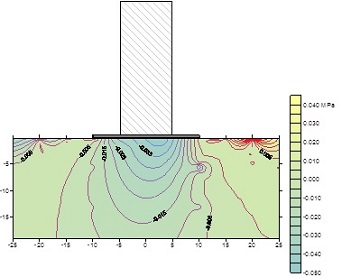
Winkler's model
However to avoid the unnecessarily high
complexity the soil simulation and its costly simulating procedures,
researchers have been developing simplified models for its analysis,
which are based, broadly speaking, on three different approaches.
Winkler's model, the continuum is replaced by a system of equivalent,
discrete springs. The great advantage of this model is its simplicity
and relative ease of implementation on the computer, while the two most
serious disadvantages are the difficulty of choosing the elastic moduli
of the springs and the deficiency of the model is that the shear
capacity is neglected. For the first problem, normally, these constants
are estimated empirically and for the second problem, is introduced an
interacting element to couple the independent springs in the Winkler
model, as the Pasternak’s Hypothesis, Kerr model, Modified Kerr
–Reissner hybrid.
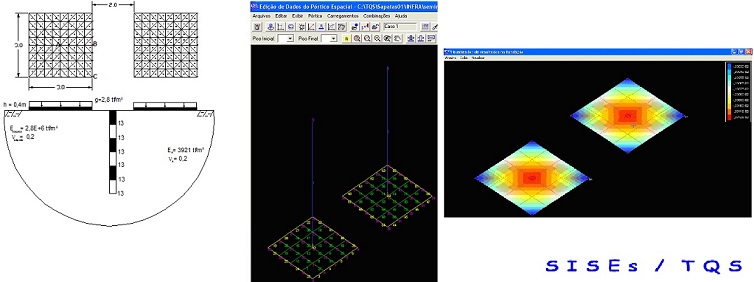
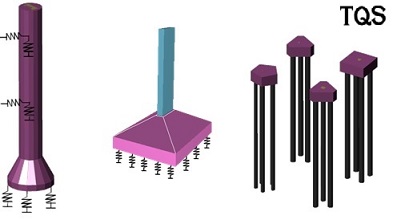
Mindlin's solution
The second approach commences with the
application of equations, developed within elasticity theory, to a
homogeneous continuum. Burmister is responsible for pioneering work in
this area, in which integral transforms are used to obtain
semi-analytical solutions for the displacements and stresses in a
homogeneous or heterogeneous medium, without taking foundations into
account. Poulos uses Burmister's solutions to calculate influence
factors for the cases of line, strip and sector loading. Chan et al. and
Davies and Banerjee extend Burmister's procedure to the case of a
vertical and/or horizontal force applied at a point inside a one or
two-layer medium.
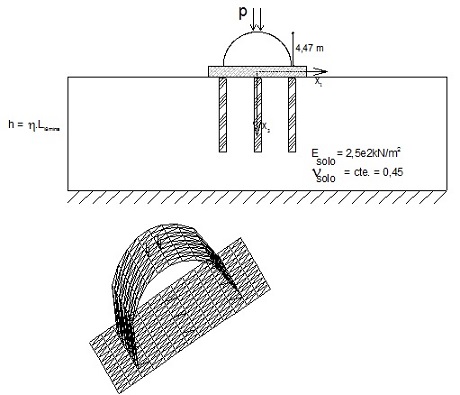
Finite Layer Method
The third approach is known as the finite layer
method (FLM), which can be used to reduce the 3D problem to one
involving only two dimensions by combining the Fourier transform
technique with the finite element method (FEM). The FLM, which can be
simply and efficiently implemented on the computer, generates elastic
solutions for the soil, whether homogeneous or not and isotropic or
anisotropic. A disadvantage of the FLM is that it only applies to
elastic problems.
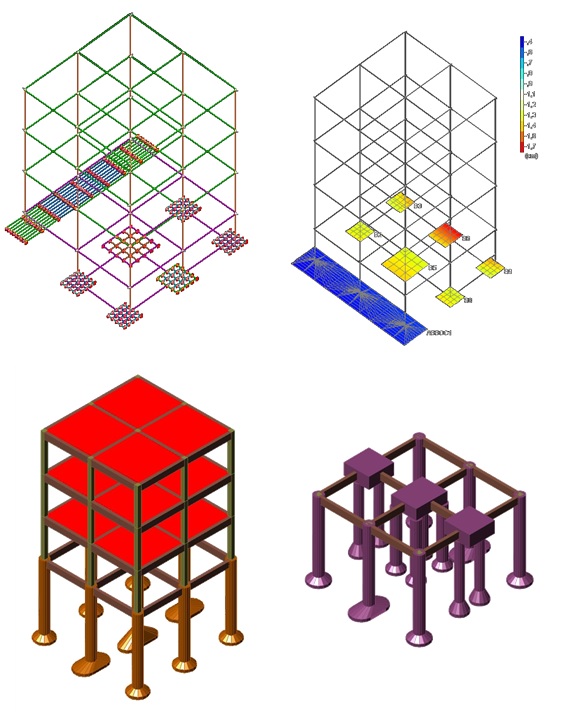
Numerical Methods
The fourth line of research makes use of two
powerful numerical methods: FEM and the boundary element method (BEM).
FEM is, generally speaking, the most versatile and powerful tool
available to solve numerical problems in mechanics. However, when it is
applied to infinite domains, such as the soil, the preparation of data
is complicated and requirements for the data storage and processor time
are high, especially when the problem is formulated with 3D elements.
This is because FEM needs a representation of the entire domain. Hence,
few research workers have employed FEM to analyze the soil continuum,
homogeneous or otherwise. BEM has proved to be the most efficient and
practical means of analyzing infinite-domain problems in static, owing
to intrinsic features of the weighted functions that ensure the boundary
conditions are satisfied at large distances. A number of researchers
have employed Mindlin's solution for the semi-infinite continuum and the
simplified Steinbrenner model for finite media.
